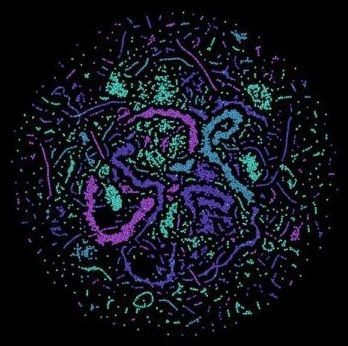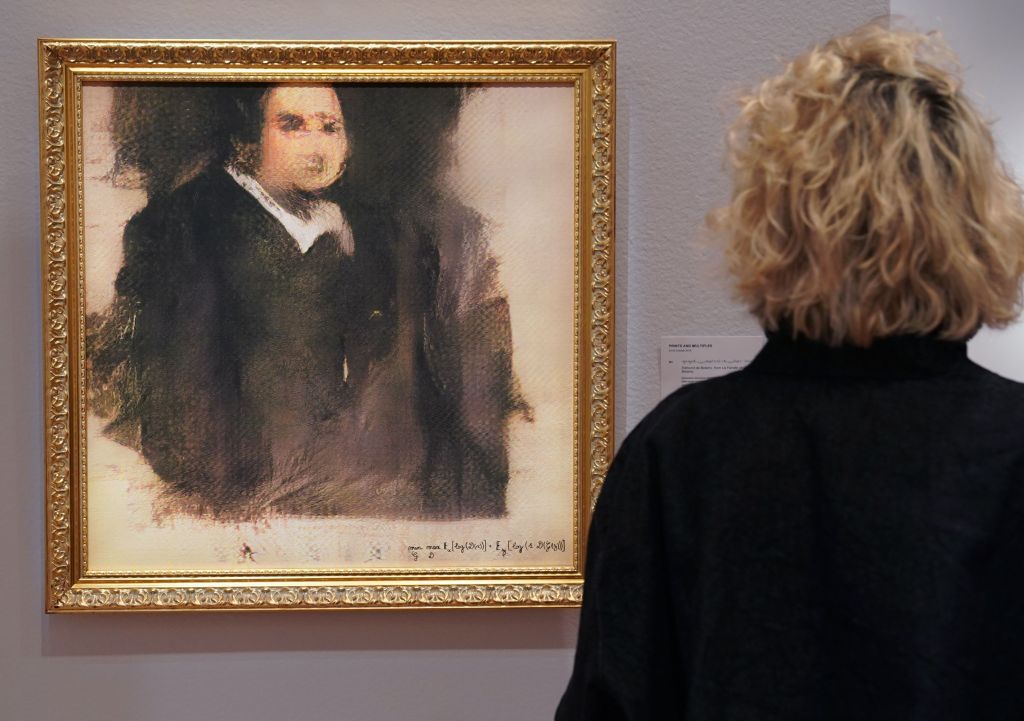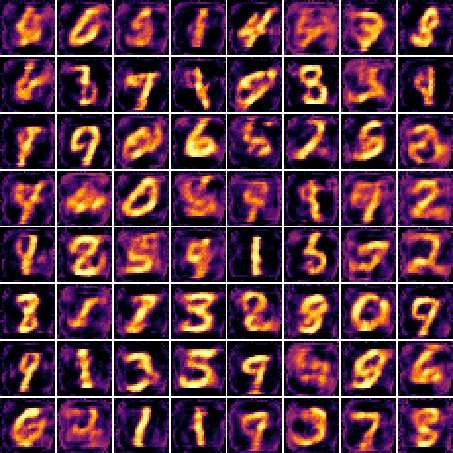The results of the poll are in.



Despite the simplicity of their visual system, fruit flies are able to reliably distinguish between individuals based on sight alone. This is a task that even humans who spend their whole lives studying Drosophila melanogaster struggle with. Researchers have now built a neural network that mimics the fruit fly’s visual system and can distinguish and re-identify flies. This may allow the thousands of labs worldwide that use fruit flies as a model organism to do more longitudinal work, looking at how individual flies change over time. It also provides evidence that the humble fruit fly’s vision is clearer than previously thought.
In an interdisciplinary project, researchers at Guelph University and the University of Toronto, Mississauga combined expertise in fruit fly biology with machine learning to build a biologically-based algorithm that churns through low-resolution videos of fruit flies in order to test whether it is physically possible for a system with such constraints to accomplish such a difficult task.
Fruit flies have small compound eyes that take in a limited amount of visual information, an estimated 29 units squared (Fig. 1A). The traditional view has been that once the image is processed by a fruit fly, it is only able to distinguish very broad features (Fig. 1B). But a recent discovery that fruit flies can boost their effective resolution with subtle biological tricks (Fig. 1C) has led researchers to believe that vision could contribute significantly to the social lives of flies. This, combined with the discovery that the structure of their visual system looks a lot like a Deep Convolutional Network (DCN), led the team to ask: “can we model a fly brain that can identify individuals?”
Whether it’s left there or right here… the tactics and destination look pretty much the same to me…
China is the world leader in facial recognition technology. Discover how the country is using it to develop a vast hyper-surveillance system able to monitor and target its ethnic minorities, including the Muslim Uighur population.
Click here to subscribe to The Economist on YouTube: https://econ.st/2xvTKdy
Improving lives, increasing connectivity across the world, that’s the great promise offered by data-driven technology — but in China it also promises greater state control and abuse of power.
This is the next groundbreaking development in data-driven technology, facial recognition. And in China you can already withdraw cash, check in at airports, and pay for goods using just your face. The country is the world’s leader in the use of this emerging technology, and China’s many artificial intelligence startups are determined to keep it that way in the future.

Quantum computers could solve complex tasks that are beyond the capabilities of conventional computers. However, the quantum states are extremely sensitive to constant interference from their environment. The plan is to combat this using active protection based on quantum error correction. Florian Marquardt, Director at the Max Planck Institute for the Science of Light, and his team have now presented a quantum error correction system that is capable of learning thanks to artificial intelligence.

A “portrait” that is the first piece of artificial-intelligence art sold by a major auction house shattered estimates, selling for 45 times what was expected.
“Portrait of Edmond de Belamy” was sold Thursday at Christies in New York for $432,500. It had been expected to go for $7,000 to $10,000. The buyer was not revealed.
The painting is one of 11 portraits of a fictional family created so far by the Paris-based art collective Obvious.

Robots are getting smaller and smaller, from the size of bugs down to tiny bead-shaped robots that could one day swim through the body to monitor health or deliver medication. MIT engineers recently managed to create cell-sized robots that could collect data about their environment, but were a little tricky to manufacture. Now, the team has found a way to mass produce these synthetic cells (syncells) through controlled fracturing of graphene.

Just where artificial intelligence is taking us, at what pace and along what trajectory, is uncertain. The technology, of course, is raising serious questions about its potential impact on jobs, privacy and politics.
The internet is a technology of low-cost communication and connection. Everything from email to e-commerce to social networks has hinged on the internet’s transformative role in changing the economics of communication. All those connections suddenly became both possible and cheap.
Artificial intelligence is a technology of low-cost prediction and discovery. It exploits the new resource of the digital age — vast amounts of data — to identify patterns and make predictions. Much of what A.I. does today can be thought of as a prediction. What product to recommend, what ad to show you, what image is in that picture, what move should the robot make next — all are automated predictions.
Wow that’s futuristic lvl streamlining…
Apple has today filed a patent for a set of intriguing new autonomous vehicle features called “Peloton.” The filing describes the ability for multiple self-driving cars to share battery capacity via a “connector arm,” dynamically adjust positions, increase efficiency, and more.

Biohacking raises a host of ethical issues, particularly about data protection and cybersecurity as virtually every tech gadget risks being hacked or manipulated. And implants can even become cyberweapons, with the potential to send malicious links to others. “You can switch off and put away an infected smartphone, but you can’t do that with an implant,” says Friedemann Ebelt, an activist with Digitalcourage, a German data privacy and internet rights group.
Patrick Kramer sticks a needle into a customer’s hand and injects a microchip the size of a grain of rice under the skin. “You’re now a cyborg,” he says after plastering a Band-Aid on the small wound between Guilherme Geronimo’s thumb and index finger. The 34-year-old Brazilian plans to use the chip, similar to those implanted in millions of cats, dogs, and livestock, to unlock doors and store a digital business card.
Kramer is chief executive officer of Digiwell, a Hamburg startup in what aficionados call body hacking—digital technology inserted into people. Kramer says he’s implanted about 2,000 such chips in the past 18 months, and he has three in his own hands: to open his office door, store medical data, and share his contact information. Digiwell is one of a handful of companies offering similar services, and biohacking advocates estimate there are about 100,000 cyborgs worldwide. “The question isn’t ‘Do you have a microchip?’ ” Kramer says. “It’s more like, ‘How many?’ We’ve entered the mainstream.”
Research house Gartner Inc. identified do-it-yourself biohacking as one of five technology trends—others include artificial intelligence and blockchain—with the potential to disrupt businesses. The human augmentation market, which includes implants as well as bionic limbs and fledgling computer-brain connections, will grow more than tenfold, to $2.3 billion, by 2025, as industries as diverse as health care, defense, sports, and manufacturing adopt such technologies, researcher OG Analysis predicts. “We’re only at the beginning of this trend,” says Oliver Bendel, a professor at the University of Applied Sciences & Arts Northwestern Switzerland who specializes in machine ethics.

Researchers at the Research Center for IT Innovation of Academia Sinica, in Taiwan, have recently developed a novel generative adversarial network (GAN) that has binary neurons at the output layer of the generator. This model, presented in a paper pre-published on arXiv, can directly generate binary-valued predictions at test time.
So far, GAN approaches have achieved remarkable results in modeling continuous distributions. Nonetheless, applying GANs to discrete data has been somewhat challenging so far, particularly due to difficulties in optimizing the model distribution toward the target data distribution in a high-dimensional discrete space.
Hao-Wen Dong, one of the researchers who carried out the study, told Tech Xplore, “I am currently working on music generation in the Music and AI Lab at Academia Sinica. In my opinion, composing can be interpreted as a series of decisions—for instance, regarding the instrumentation, chords and even the exact notes to use. To move toward achieving the grand vision of a solid AI composer, I am particularly interested in whether deep generative models such as GANs are able to make decisions. Therefore, this work examined whether we can train a GAN that uses binary neurons to make binary decisions using backpropagation, the standard training algorithm.”